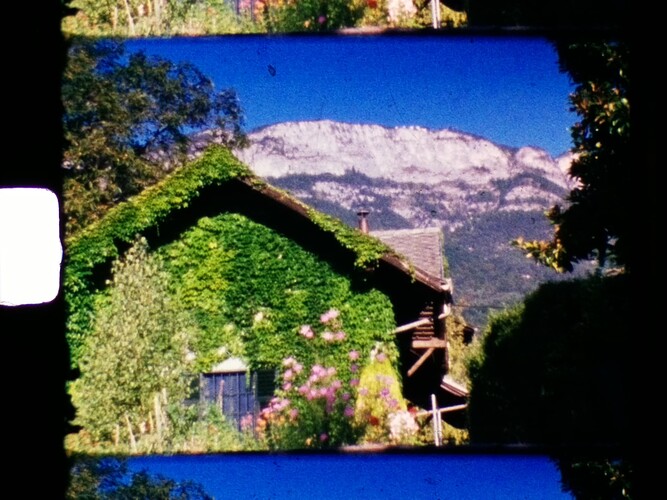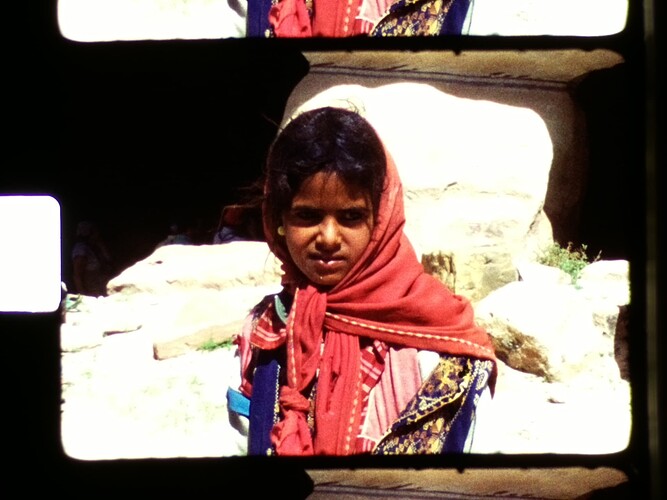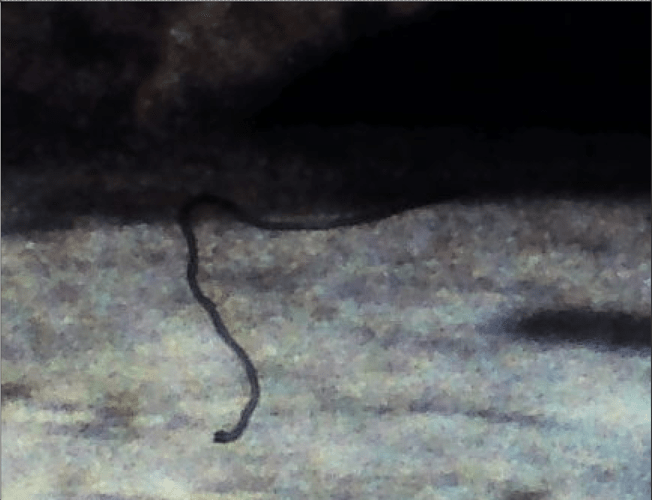Just to continue the discussion slightly, I want to present a little bit of the variation of image definition I am seeing in my scans.
Probably the worst footage I have encountered so far is from a 1975 Agfachrome movie, recorded with my own Chinon-manufactured Super-8 camera. This one was scanned using a see3cam-unit at the original resolution of 2880 x 2160 pixel, for speed reasons transferred as .jpg. The lens used in this scan is the trusted Schneider Componon-S 50mm.
Focus was on the right bow of the brigde. I selected this frame on purpose, because of the dirt particle in the left part of the frame - this allows one to judge the quality/focus of the scan.
Clearly, this frame is far from coming even close to HD resolution.
Compare this to the following frame:
This footage was recorded about 10 years later, using the Moviechrome 40 film stock from Agfa, which replaced the old Agfachrome stock in the beginning of the 80’s. Coming from an Ebay-find, the camera used is unknown. But it is clearly better than my old Chinon.
Scanning was done this time at a resolution of 2028 x 1520 pixel with a Raspberry Pi HQ camera, fitted with the same lens as above. The camera was operated in mode 3.
This frame comes close to a HD-resolution. Again, this frame was specifically selected to have some dirt and scratches in order to judge the raw image definition of the scan.
For comparision, here’s finally a scan of Kodachrome 40 footage, also from the 80’s. The scanning setup is the same as before (Raspberry Pi HQ camera with Schneider lens). The movie camera used is again unknown, as this comes from an Ebay-find as well.
There is a small dirt particle visible on the right collar of the girl (in case you want to judge the scan quality). In terms of image definition, the Agfa Moviechrome 40 and the Kodachrome 40 seem for me to be comparable. Note that all examples were chosen from footage which did not include much camera movements. But in neither of the footages a tripod was used.
Additional comment: As it seems that the forum software recodes uploaded images and scales them to a maximum width of 1920, here are some enlarged parts of the above images. First, the Agfachrome film stock digitized with a see3cam (300% enlargement):
If one looks closely, .jpg-compression artifacts are visible. Nevertheless, the film stock simply does not have that good of a resolution. As far as I know, there is no MFT-data available for that old material, as measuring MFTs became only fashionable in the 80’s (and even then, they were not easily available).
Next is the Moviechrome 40 film stock, also from Agfa, which was introduced at the beginning of the 80’s. Here, the scale-up is again to 300%. So far as I know, there is not MTF-data available for this film stock either.
The above image was captured with a Raspberry Pi HQ camera running in mode 3. Finally, here’s an example scan with the same setup, this time Kodachrome 40 film stock
For Kodachrome, MFT-data is available (as shown in the first post above).





